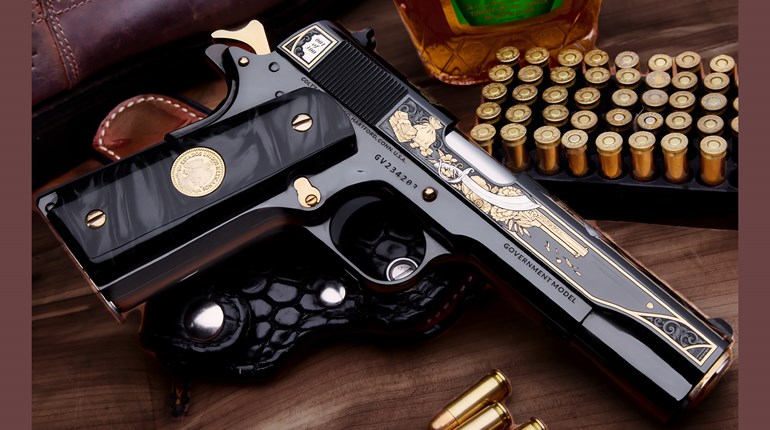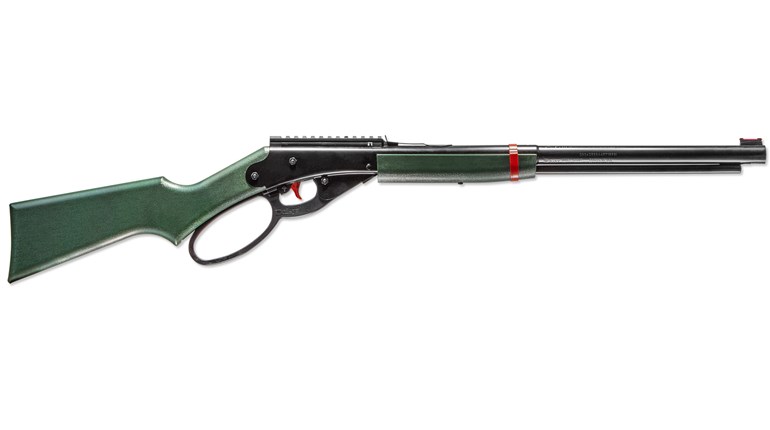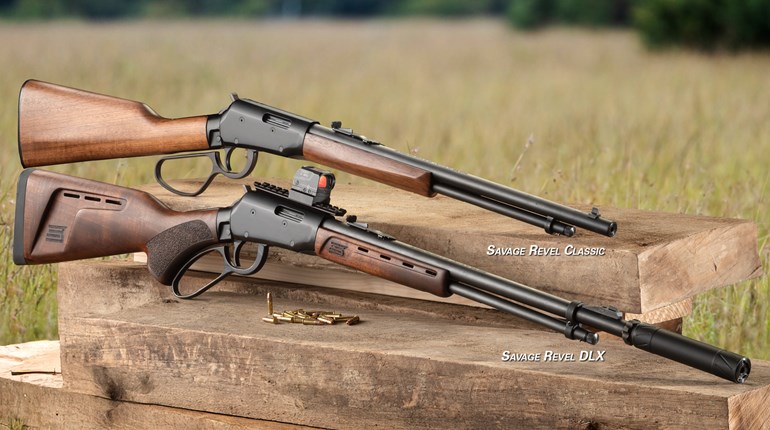
From the vault: Herbert G. Houze reviews the history of the legendary Winchester 1876 Centennial Rifle. As published in October, 2001.
The Winchester 1876 Centennial Rifle
By Herbert G. Houze
Contrary to popular opinion, the Winchester Repeating Arms Company's Model 1876 "Centennial" Rifle did not evolve from its chronological predecessor the Model 1873. Rather, it was the final product of a development program that had begun some 12 years before its introduction.
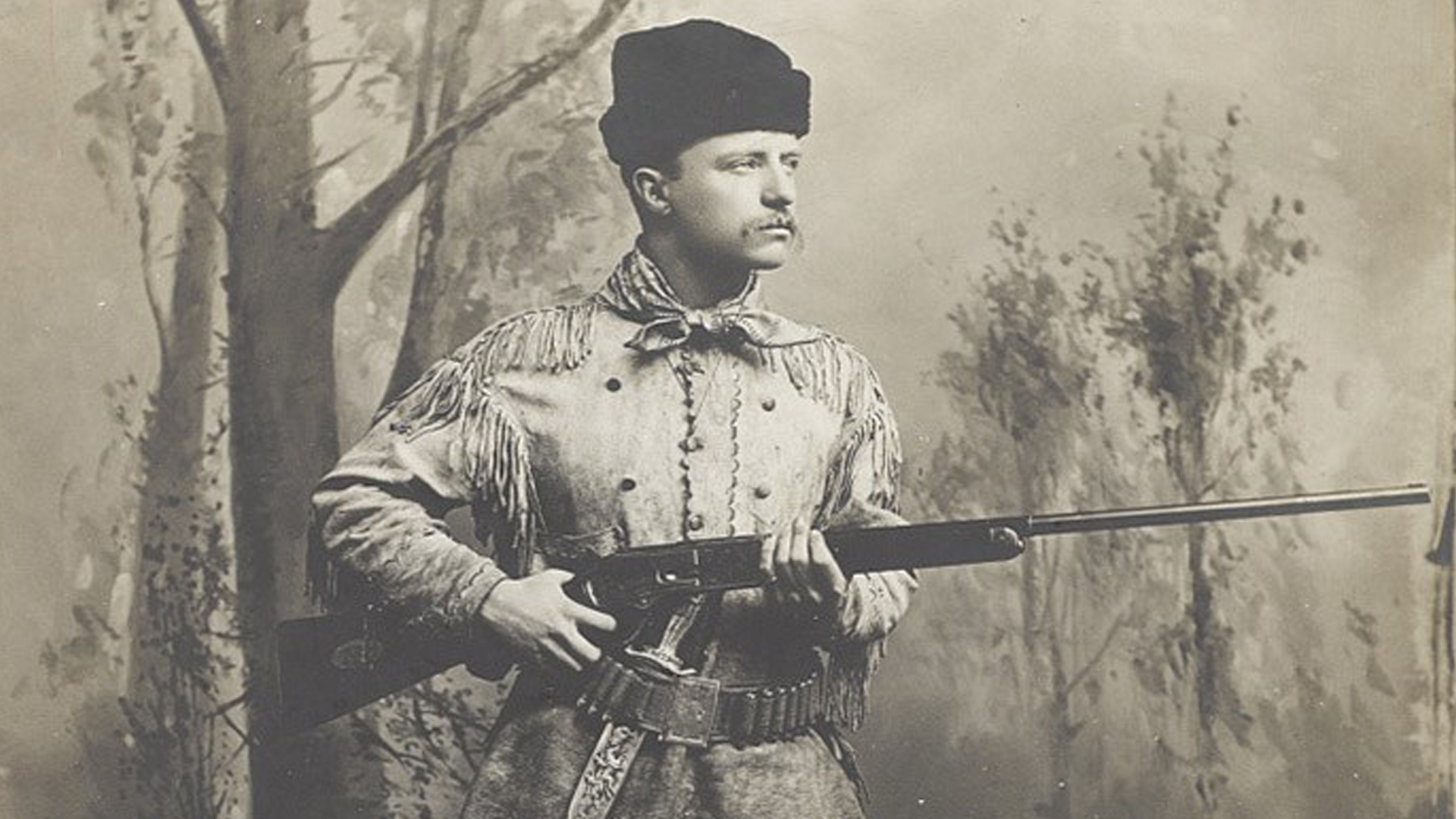
Most, if not all of the confusion now surrounding the Model 1876's origins can be traced to a promotional brochure issued by Winchester when the rifle was unveiled at the Philadelphia Centennial Exhibition. To capitalize on the Model 1873's growing popularity among the sporting public, as well as a growing interest in big game hunting, the new "Centennial" rifle was introduced as follows:
The success attending the sale and use of Model 1873 and the constant calls from many sources, and particularly from the regions in which the grizzly bear and other large game are found, as well as from the plains where the absence of cover and the shyness of the game require the hunter to make his shots at long range, made it desirable for the Company to build a still more powerful gun.
Retaining all the essential mechanical elements of the former model, and adding such improvements as seemed possible, the result has been a gun carrying a central fire cartridge, capable of reloading, caliber .45/100, with 75 grains of powder and 350 grains of lead, being nearly double the charge used in Model 1873, and about the same as that adopted by the U.S. government.
Given the content of these remarks, it was inevitable that the public would assume that the Model 1876 was merely a larger scale version of the Winchester Model 1873. Yet, this simply was not true. The basic form and construction of what was to become the "Centennial" model had been determined long before any thought was given to producing the Model 1873. Its introduction, however, was to be delayed for almost eight years due to the slow process of developing reliable, as well as reloadable, large-bore cartridges.
The true origin of the Model 1876 can be traced to a series of iron-frame lever-action rifles and carbines developed by Oliver F. Winchester for the overseas market between 1866 and 1869. Now identified as the Model 1866 Swiss Contract and 1868 British Trial rifles, these arms all were built using receivers having detachable sideplates of the type later encountered on the Winchester Model 1873. Unlike the latter model, however, both the Swiss and British series were chambered for large-bore center-fire cartridges.
Although both models met with considerable success during their respective trials, they were not commercially produced in any great numbers. Indeed, only the Winchester Swiss Sharpshooters Rifle was made in quantity and then only in Switzerland by the Zurich firm of Weber-Ruesch.
Following the purchase of the American Repeating Rifle Company by Winchester in 1869, Luke Wheelock began a series of experiments to determine whether or not Christopher Spencer's rotating breechblock could be altered for use in a new iron frame arm. Though tests indicated that such a product was feasible, extraction problems led to the design's abandonment. Wheelock then developed a .45-70-caliber rifle that utilized a more conventional toggle-link action. Noteworthy more for its clean flowing lines than its ability to withstand hard service, this design, too, was set aside.
Realizing that market conditions would not support a continued growth in the .44-caliber rimfire Model 1866 brass frame's sales, O.F. Winchester authorized the production of a stopgap design. This led to the introduction of the iron-frame Model 1873. Despite the less than stellar sales initially generated by the 1873, work continued on developing a larger, more powerful version.
By 1875 a series of prototypes had been built in a variety of calibers ranging from .38 to .45 caliber. As the design was fine tuned, George H. Dupee, George R. Stetson and Charles S. Wells Dupee perfected a .45-caliber cartridge that could be effectively used against all of North America's biggest game. Carrying a powder charge of approximately 75 grains, the new round was christened the .45-75 Winchester Center Fire cartridge.
When the new model was unveiled at the Philadelphia Centennial Exposition of 1876, the Winchester Company displayed four different versions: a deluxe sporting rifle, standard sporting rifle, a carbine and a rifle musket. Interestingly, only the standard sporting rifle and musket were in .45-75 caliber. The deluxe sporting rifle and carbine were chambered for Wells and Dupee's experimental .40-caliber round.
Buoyed by the publicity that the new model had generated at the exposition and newspaper accounts documenting the scores which Captain James E. Stetson (one of the company's employees) had made at Creedmoor using a prototype .45-75 caliber rifle, Winchester immediately set about tooling up for the new model. Despite some setbacks, this was completed by early June of 1877 and the first production Model 1876 was delivered to the company's shipping department on Jun. 8, 1877.

While initial production was limited to sporting rifles, as additional tooling was completed the product line was enlarged to include rifle muskets and finally carbines. Over the next 20 years (Jun. 8, 1877 to Dec. 17, 1897 when manufacture ceased) a total of 24,881 Model 1876 carbines, muskets and rifles were made.
Although a final lot of Model 1876 stock receivers were serial numbered from 63,871 to 63,911 on Jan. 28, 1898, actual production of the model had ended almost 10 years earlier. During the interim, orders were processed using pre-existing component inventories, and receivers were, for the most part, individually numbered on an as-needed basis. The last .45-75-caliber Model 1876 to be assembled and shipped was number 69,869. Fitted with a 28-inch octagon barrel, plain trigger and a plain pistol grip stock, this rifle was received in the Winchester warehouse on Dec. 17, 1897. It remained there until shipped on Mar. 15, 1898. Interestingly, the previous .45-75-caliber Model 1876 to be shipped was an unmounted receiver, serial number 63,870, sent out on Jan. 4, 1898.
While it is likely that the sales of the .45-75-caliber Model 1876 never approached the levels originally hoped for by Winchester's management, they were, nevertheless, fairly substantial. Yet in the long term, it was not to be these sales levels or the revenues they generated that were to be remembered by the company. Rather, it was the role that the .45-75-caliber Model 1876 played in making the name Winchester, and therefore Winchester firearms, synonymous with reliability.
This incidental by-product of the model's distribution came about through its adoption by the North West Mounted Police in Canada. While this event in and of itself might not have appeared to have been of any great significance at the time, the American public's subsequent infatuation with "The Mounties" and their "trusty Winchesters" proved otherwise. The image of a lone Mounted Police officer facing large groups of potentially hostile natives or desperate law-breakers was popularized in countless articles published in the United States, as well as abroad.
To Winchester's good fortune, many of these articles were illustrated with line drawings clearly showing the stalwart Constable's Model 1876 Carbine. As a result, the general public formed an immediate association of the North West Mounted Police with Winchester and an assumption that it was the Winchester rifle that allowed individual constables to carry out their duties with an unassailable authority. The perception of the Winchester's reliability was in turn a natural result of the public's belief that a force such as the North West Mounted Police would choose only the safest and most reliable of firearms for their men. To use a word coined by Horace Walpole, the adoption of the .45-75-caliber Model 1876 by the North West Mounted Police was a matter of pure "serendipity."

To meet the demands of sportsmen pursuing dangerous game in Africa, India and the western United States, the Winchester Repeating Arms Company decided in late 1878 to develop a .50-caliber version of the Model 1876. Between March 1879, when production of this variation began, and 20 years later on Mar. 15, 1899 when the last .50-caliber Model 1876 was shipped, a total of 3,310 were made.
In keeping with its intended purpose—not surprisingly—the vast majority of these were sporting rifles. Interestingly, most of these rifles were fitted with 22-inch round barrels rather than the 26-inch style recommended by Winchester. It should also be noted that some purchasers ordered rifles having barrel lengths at the other end of the spectrum (i.e. 30-, 32- and one 36-incher). Presumably these were to be used for long-range shooting despite the firm's advertisement that the .50-caliber cartridge was designed for use at relatively close range.
As might be expected, very few .50-caliber Model 1876s were altered prior to shipment. Of the 35 that are so listed, 30 had their original 22-inch barrels replaced with 26-inch versions; four were rebarreled to .40-60 caliber, and; one was rebarreled for testing a .45-70-caliber experimental cartridge.
Although the .50-95-caliber Model 1876 was designed to meet the requirements of a very limited number of sportsmen, it had a consistent sales life and managed to maintain a dominant share of its narrow market from the time it was introduced until it was discontinued. In light of this accomplishment it is rather fitting that the last Model 1876 to be made, as well as sold, was a .50-95-caliber rifle. Delivered to the Winchester warehouse on Dec. 5, 1898, serial number 63,806 had a matted 26-inch round barrel, set trigger, "Fancy" checkered stock with pistol grip and a shotgun-style buttstock with a rubber buttplate. It was sold under Order Number 736 and shipped to an unknown destination on Mar. 18, 1899—two months shy of the 20th anniversary of the .50-95 cartridge.
In response to a rising tide of criticism that the .45-75-caliber cartridge produced excessive levels of recoil, Winchester made the following announcement in its general sales catalog issued on May 1, 1879:
Another gun of this model, chambered to carry a cartridge having a straight shell containing 60 grains of powder and a bullet weighing 300 grains, will be furnished to order to any one wishing a gun having greater power and range than Model 1873, but less power, range and recoil, than the regular Model 1876. The prices for guns of this style, and also for the cartridges, will be the same as the regular Model 1876.
Production of the .45-60-caliber Model 1876 began in June of 1879 and the first examples were shipped to customers on Jun. 20. Although the company probably believed that this variation would only have a limited market appeal, it proved to be quite popular and sales were rather brisk during the first year of its production. As a result, it was catalogued separately in the Winchester Repeating Arms Company's General Catalogue issued Aug. 1, 1880.
The last .45-60 Model 1876 to be made and sold also has the distinction of having the highest serial number recorded for the entire Model 1876 series. This gun, a standard carbine, serial number 63,871 was received in the Winchester warehouse on Feb. 1, 1898 and was shipped under Order Number 103 seven days later on Feb. 8, 1898.
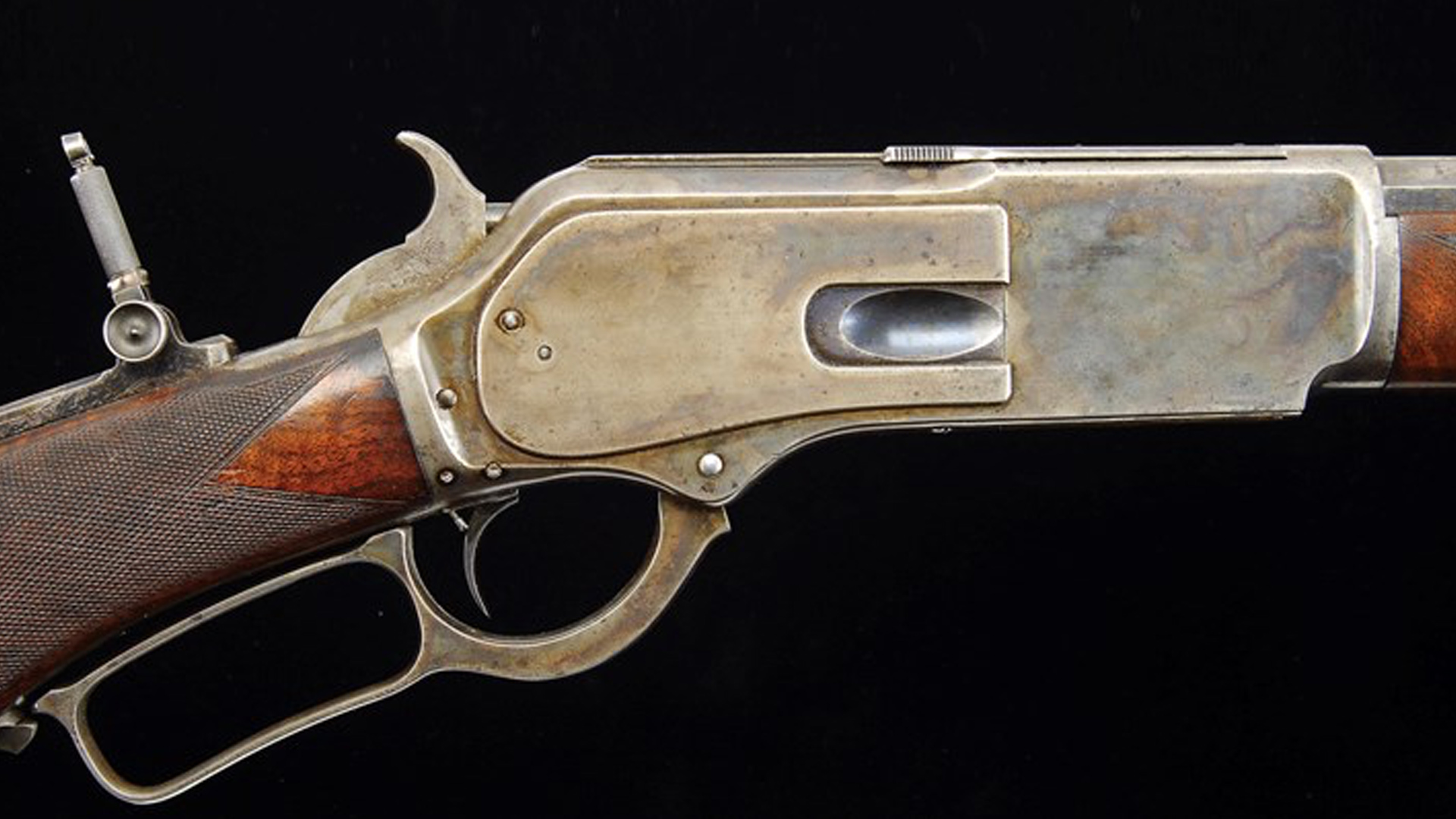
Recognizing that the Marlin Firearms Company's .40-caliber Model 1881 Lever Action Magazine Rifle was making significant inroads into their markets, the Winchester company began developing a competitively sized arm of a similar bore in 1882. Initially it was planned to offer the new Model 1883 Hotchkiss Bolt Action Magazine Rifle in .40-65 caliber but for reasons unknown, those plans were dropped in early 1884.
Almost immediately thereafter, however, drawings were prepared to illustrate the specialized components of a .40-caliber Model 1876. Christened the .40-60-caliber Model 1876, this arm was first advertised in Winchester's catalog issued Sep. 1, 1884:
The .40-60 Winchester
To make our line of Sporting Rifles more complete, we now offer a Winchester of .40 caliber. The cartridges are made with a reloading shell containing 62 grains of powder and 210 of lead. It will be noticed that the powder-charge is large in proportion to the weight of the bullet, being about 1 to 3 4/10. The trajectory obtained, when fired at 100 yards, rises above the line of sight 1¾ inches at 50 yards; and when fired at 150 yards, rises above the same line 3 9/10 inches at 50, and 4¼ inches at 100 yards. The initial velocity is 1,460 feet per second.
In determining the proportions of powder and lead contained in this cartridge, the Company has spared no expense in experimenting. The bullet has been made as light as the caliber will permit; and the powder-charge as great as the length of the cartridge will allow. It is believed that no better results can be obtained within these limits of caliber and length, when accuracy and flat trajectory are both considered. The gun is finished in the same manner as the .45-60.
Despite the company's hopes that this version of the Model 1876 would be successful, it never reached the sales levels that had originally been anticipated. As a result, only 9,574 were made (two of which were subsequently altered to different calibers). In addition, four rifles originally built in .50-95 caliber were altered to .40-60.
Given its limited popularity, it is not surprising that the last .40-60-caliber Model 1876 was sold some two years before the other variations of the model ended their production lives. Serial number 63,840 was a standard sporting rifle fitted with a 26-inch octagonal barrel and a plain trigger. It was received in the Winchester warehouse on Sept. 16, 1896 and shipped the following day under Order Number 18698.
While the production of the Model 1876 numbered only 63,799 units, it demonstrated that a large-bore lever-action rifle was a commercially viable product. In so doing, it paved the way for the later Model 1886 and 1895 series of rifles. More importantly, however, the use of the Model 1876 by such groups as the North West Mounted Police insured that the name "Winchester" entered the English language as a synonym for any lever-action repeating rifle.
As a postscript, it is worth mentioning that some members of the shooting public remembered the Model 1876's value as a target rifle long after Captain Stetson's exploits at Creedmoor. In mid-April of 1896 Winchester received an order from Josiah Stanford, of Oakland, CA, requesting a Model 1876 Target Rifle "of the same weight and sighting as that used by Dr. Stetson at Creemore [sic] some years past." Unfortunately, the firm was not able to oblige Mr. Stanford with a Model 1876, and so he purchased a Model 1894 Rifle in its place.
Read more classic Shooting Sports USA articles:













